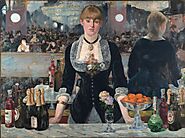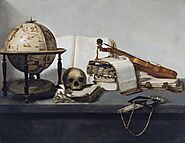-
About
- About Listly
- Community & Support
- Howto
- Chrome Extension
- Bookmarklet
- WordPress Plugin
- Listly Premium
- Privacy
- Terms
- DMCA Copyright
- © 2010-2025 Boomy Labs


 Examining Ermine
Examining Ermine
Listly by Examining Ermine
Daft and useful things in the art world

I continue to reel from the sex doll deficit announced last week by The Sun. Its full headline shouting: ‘DOLL OUT: Sex doll shortage for UK and US customers as coronavirus shuts factories and halts production in China.’ Does this mean sex dolls are being delivered to other countries? Are we to assume the penchant is particular to the English speaking world? Do the Chinese hate us? I have ever to read the article. Should the answer lie in there somewhere, DM me. Or, actually, don’t. Another way to join my lungs in living on the edge. Hopefully the production turnaround will match that of COVID-19, 12 weeks being BoJo’s latest slogan. At which point we can all electively stay home and wank off into a piece of plastic constructed by underpaid, virus recovered hands (wash your dolls people). All the while attempting to forget the ‘un-blitz’ spirit of the last few months, almost exclusively triggered by the requirement to sit still, and stuff our faces with Aldi’s ‘From the Freezer Prawn and White Wine Salmon Wellington’. The war generation didn’t know how lucky they had it.

Traditionnally, we have this idea that contemporary art is supposed to be a serious matter and humour would be on the lowest ladders of our mental scale.

When I first began learning about the history of art, I remember I wanted to understand one thing above all. I wanted to know the timeline. In other words, the grand story of…

As galleries around the world begin to slowly reopen, we are focusing on spaces that are now accepting public visitors.

Eike Schmidt says up to a thousand works are languishing in state-run stores all over Italy

45 years ago, burglars plundered the Montreal Museum of Fine Arts' collection by gaining access through an unalarmed section of its roof.

Intrigues, bitter rivalries, and vicious pranks dominated the lives of the great Italian Renaissance artists, the early art historian Giorgio Vasari suggests.
